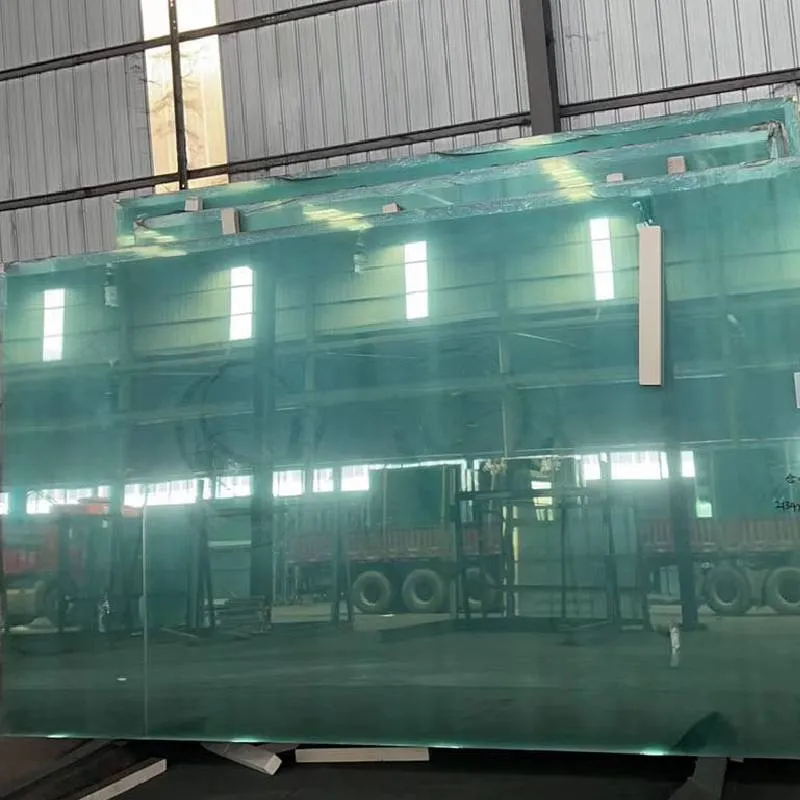Understanding Obscure Glazing Types
Obscure glazing, often referred to as privacy glass, is a specialized type of window treatment that serves both aesthetic and functional purposes in various architectural applications. Unlike traditional clear glass, obscure glazing provides a level of privacy while still allowing light to permeate a space. This unique characteristic makes it a popular choice for residential and commercial buildings alike.
One of the most common types of obscure glazing is frosted glass. This glass is made by sandblasting or acid-etching clear glass, creating a translucent surface that diffuses light while obscuring visibility from either side. Frosted glass is often used in bathrooms, meeting rooms, and other areas where privacy is paramount without sacrificing natural light.
Understanding Obscure Glazing Types
Laminated glass is another obscure glazing technique that combines two or more layers of glass with interlayer materials. This construction results in a multitude of benefits, including sound insulation and improved safety. Laminated glass can be made obscure through the use of tinted or specialized interlayers, effectively controlling visibility while also providing UV protection.
obscure glazing types
Tinted glass serves both practical and decorative purposes. By adding a thin layer of color to the glass during manufacturing, it can reduce glare and heat gain while offering some level of privacy. Tinted glazing is especially popular in commercial buildings and large windows, where sunlight can cause discomfort to occupants.
Smart glass or switchable glass technology is the latest innovation in obscure glazing. This type of glass can change its opacity with the flip of a switch, allowing users to choose between transparency and obscurity. It’s a fantastic option for modern buildings where design flexibility and adaptability are essential.
Lastly, one must consider the installation and maintenance aspects of obscure glazing. Proper installation is crucial to ensure thermal performance, security, and overall visual appeal. Additionally, while obscure glass requires less frequent cleaning than clear glass, maintaining its aesthetic qualities still involves occasional care to avoid dullness or discoloration.
In conclusion, obscure glazing types offer a myriad of options for individuals looking to enhance privacy, reduce glare, and improve the overall design of their spaces. Whether through frosted, textured, laminated, tinted, or smart glass choices, understanding these options allows for more informed decisions in architectural design and home improvement projects.
 Afrikaans
Afrikaans  Albanian
Albanian  Amharic
Amharic  Arabic
Arabic  Armenian
Armenian  Azerbaijani
Azerbaijani  Basque
Basque  Belarusian
Belarusian  Bengali
Bengali  Bosnian
Bosnian  Bulgarian
Bulgarian  Catalan
Catalan  Cebuano
Cebuano  Corsican
Corsican  Croatian
Croatian  Czech
Czech  Danish
Danish  Dutch
Dutch  English
English  Esperanto
Esperanto  Estonian
Estonian  Finnish
Finnish  French
French  Frisian
Frisian  Galician
Galician  Georgian
Georgian  German
German  Greek
Greek  Gujarati
Gujarati  Haitian Creole
Haitian Creole  hausa
hausa  hawaiian
hawaiian  Hebrew
Hebrew  Hindi
Hindi  Miao
Miao  Hungarian
Hungarian  Icelandic
Icelandic  igbo
igbo  Indonesian
Indonesian  irish
irish  Italian
Italian  Japanese
Japanese  Javanese
Javanese  Kannada
Kannada  kazakh
kazakh  Khmer
Khmer  Rwandese
Rwandese  Korean
Korean  Kurdish
Kurdish  Kyrgyz
Kyrgyz  Lao
Lao  Latin
Latin  Latvian
Latvian  Lithuanian
Lithuanian  Luxembourgish
Luxembourgish  Macedonian
Macedonian  Malgashi
Malgashi  Malay
Malay  Malayalam
Malayalam  Maltese
Maltese  Maori
Maori  Marathi
Marathi  Mongolian
Mongolian  Myanmar
Myanmar  Nepali
Nepali  Norwegian
Norwegian  Norwegian
Norwegian  Occitan
Occitan  Pashto
Pashto  Persian
Persian  Polish
Polish  Portuguese
Portuguese  Punjabi
Punjabi  Romanian
Romanian  Russian
Russian  Samoan
Samoan  Scottish Gaelic
Scottish Gaelic  Serbian
Serbian  Sesotho
Sesotho  Shona
Shona  Sindhi
Sindhi  Sinhala
Sinhala  Slovak
Slovak  Slovenian
Slovenian  Somali
Somali  Spanish
Spanish  Sundanese
Sundanese  Swahili
Swahili  Swedish
Swedish  Tagalog
Tagalog  Tajik
Tajik  Tamil
Tamil  Tatar
Tatar  Telugu
Telugu  Thai
Thai  Turkish
Turkish  Turkmen
Turkmen  Ukrainian
Ukrainian  Urdu
Urdu  Uighur
Uighur  Uzbek
Uzbek  Vietnamese
Vietnamese  Welsh
Welsh  Bantu
Bantu  Yiddish
Yiddish  Yoruba
Yoruba  Zulu
Zulu 

